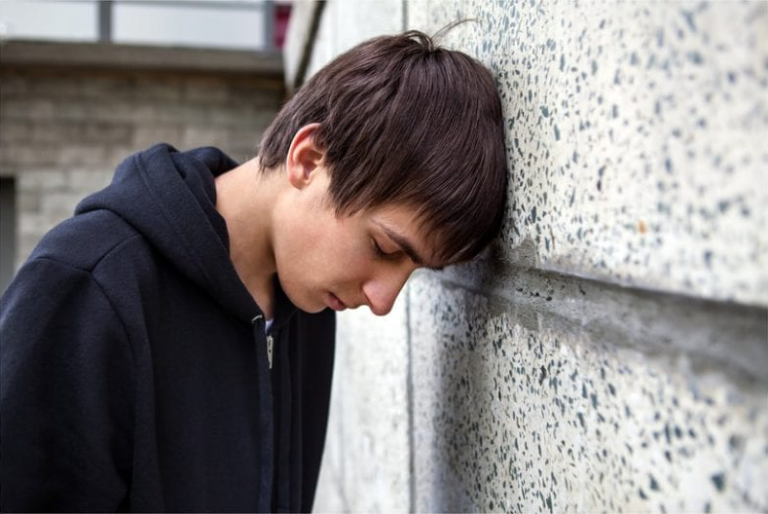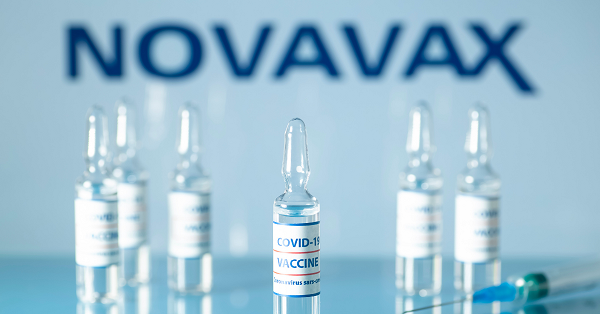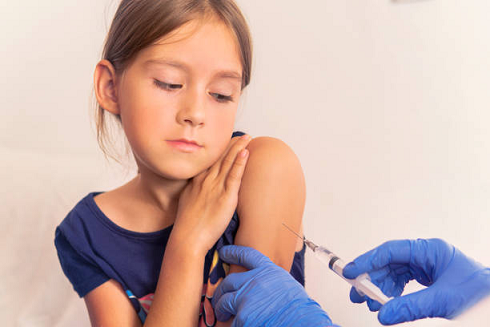There has been an increase in suicide attempts by adolescents aged 12-17 years old during the COVID-19 pandemic according to the U.S. Centers for Disease Control and Prevention (CDC). The longer the lockdowns that included social isolation and compulsory masking continued, the number of suicide attempts increased, especially among adolescent girls.
From July through August 2020, there was a 26.2 percent increase in emergency room visits by adolescent girls for attempted suicide compared to the year before. Between February and March 2021, the average number of weekly emergency room trips for suicide attempts among adolescent girls rose by 50.6 percent compared to the prior year.1
The report states:
The findings from this study suggest more severe distress among young females than has been identified in previous reports during the pandemic, reinforcing the need for increased attention to, and prevention for, this population.2
Daily Life Disruption, COVID-19 Social Distancing Regulations and Health Anxiety Played a Role in Teen Suicide Increases
The CDC concluded that the lockdown’s disruption of daily life, along with social distancing orders played a role in the increased number of suicide attempts. Being separated from friends, teachers, school, an increase in substance abuse, health anxiety and lack of access to mental health treatment may have contributed to this increase.
Although the data was collected from the National Syndromic Surveillance Program, which lists data from emergency room visits in 49 states, some states had incomplete data and ethnic and racial information were not available. The study points out that the true number of suicide attempts was likely even higher as many people were hesitant to go to the emergency room during the pandemic.3
It appears that the expert’s warnings about about this unfortunate effect of the lockdowns were not heeded. In July 2020, the then director of the CDC, Robert Redfield, MD, warned:
There has been another cost that we’ve seen, particularly in high schools. We’re seeing, sadly, far greater suicides now than we are deaths from COVID. We’re seeing far greater deaths from drug overdose that are above excess that we had as background than we are seeing the deaths from COVID.4
Teens Experienced More Deaths From Suicide Than from COVID
In March 2020, the American Institute for Economic Research published an article warning of the catastrophic effects of the shut-down, including an increase in the suicide, drugs and crime rates. A few months later, in May, doctors in Northern California confirmed that they saw more deaths from suicide than from COVID. In fact, Michael deBoisblanc, MD of the John Muir Medical Center in California said that in the 4 weeks from the end of April through the end of May, he’s seen, “years’ worth of suicides.”
Kacey Hansen, a 30-year veteran trauma center nurse at the same hospital commented on the increase in teen suicides during the COVID pandemic. She said:
What I have seen recently, I have never seen before. I have never seen so much intentional injury.5
The mental health of adolescents in the U.S. which was already deteriorating before the COVID pandemic, greatly declined during the lockdowns according to a Dec. 7, 2021 advisory issued by the U.S. Surgeon General. Prior to the pandemic, one in five children between three to 17 years old suffered with a mental, emotional, developmental or behavioral disorder. Nineteen percent of high school students seriously considered suicide, a 36 percent increase over the last decade with 16 percent going as far as to making a suicide plan which is a 44 percent increase over the last decade. The suicide rate among children aged 10-17 increased by 57 percent from 2007 to 2018.6
National Emergency for Children’s Mental Health Declared by Child Health Experts
In 2018, suicide was the second leading cause of death for people aged 10-24.7 Due to the dramatic increase in mental health challenges to children during the lockdowns and other government responses to the pandemic, experts in pediatric health declared a national emergency for children’s mental health.
The Surgeon General warned:
Mental health challenges in children, adolescents, and young adults are real and widespread. Even before the pandemic, an alarming number of young people struggled with feelings of helplessness, depression, and thoughts of suicide — and rates have increased over the past decade. The COVID-19 pandemic further altered their experiences at home, school, and in the community, and the effect on their mental health has been devastating. The future wellbeing of our country depends on how we support and invest in the next generation.8
University of Bristol suicide expert, David J. Gunnell, FMedSci, DSc, PhD wrote in the June 2020 issue of the Lancet:
Suicide is likely to become a more pressing concern as the pandemic spreads and has longer-term effects on the general population, the economy, and vulnerable groups. The pandemic will cause distress and leave many people vulnerable to mental health problems and suicidal behaviour. Mental health consequences are likely to be present for longer and peak later than the actual pandemic.9
The Mental Health of Americans of All Ages Declined During COVID Pandemic
The toll of loss from suicide has affected the entire U.S. More people died of suicide in one Tennessee county than died of COVID in the entire state by late March 2020.10 In Pima County, Arizona there was a spike in suicide rates in March of 2020 with 23 deaths in a few months, including 15 suicides during a 14-day period in March.11 Suicides in Los Alamos, New Mexico tripled in 2020 from the previous year, while they went up 13 percent in Cook County, Illinois. In Fresno, California June 2020 saw a 70 percent increase in suicides from June 2019.12
A report published in the Morbidity and Mortality Weekly Report, published by the CDC, which examined the affect that the pandemic and the government’s response to COVID, such as instituting lockdowns, had on mental health. Researchers found that symptoms of anxiety and depressive disorders was almost three times higher from April-June 2020 compared to the same time in the previous year.
Almost 41 percent of those surveyed reported at least one negative behavioral or mental health symptom such as anxiety or depressive disorder (30.9 percent), trauma or stress disorder (26.3 percent), and an increase in substance use (13.35 percent). Among the 10.7 percent of respondents who said they had seriously considered suicide in the last month, 25.5 percent were aged 18-24; 18.6 percent were Hispanic; 15.1 percent were African-American; 30.7 percent were unpaid caregivers for adults, and 21.7 percent were essential workers.13
According to a survey by the CDC in 2020, 75 percent of 18-24 year-olds struggled with mental health issues or a drug problem and one in four adults thought about committing suicide in the last 30 days.14
A study published in the Journal of the American Medical Association (JAMA) in April 2021 found…
Suicide mortality rates that were rising over the past two decades combined with the current pandemic are a “perfect storm. Factors include economic stress, social isolation, reduced access to religious services, overall national anxiety, increased firearm sales and increases in health care provider suicides.15
If you would like to receive an e-mail notice of the most recent articles published in The Vaccine Reaction each week, click here.
Click here to view References:1 Mendez R. Suicide attempts among adolescent girls surged by more than 50% during pandemic, CDC says. CNBC June 11, 2021.
2 Downey C. CDC: Teen Suicide Attempts Surged During COVID Lockdown. Yahoo! News June 12, 2021.
3 Yard E, Radhakrishnan L, Ballesteros MF et al. Emergency Department Visits for Suspected Suicide Attempts Among Persons Aged 12–25 Years Before and During the COVID-19 Pandemic — United States, January 2019–May 2021. MMWR 2021; 70: 888–894.
4 Prestigiacomo A. CDC Director: Threat Of Suicide, Drugs, Flu To Youth ‘Far Greater’ Than Covid. The Daily Wire July 28, 2020.
5 Tucker J. Lockdown Suicide Data Reveal Predictable Tragedy. American institute for Economic Research May, 22, 2020.
6 U.S. Surgeon General Issues Advisory on Youth Mental Health Crisis Further Exposed by COVID-19 Pandemic. Press Release. U.S. Surgeon General Dec. 7, 2021.
7 AAP-AACAP-CHA Declaration of a National Emergency in Child and Adolescent Mental Health. American Academy of Pediatrics Oct. 19, 2021.
8 U.S. Surgeon General Issues Advisory on Youth Mental Health Crisis Further Exposed by COVID-19 Pandemic. Press Release. U.S. Surgeon General Dec. 7, 2021.
9 Raman S. Pandemic’s effect on already rising suicide rates heightens worry. Roll Call Aug. 5, 2020.
10 Mastrangelo D. Suicides outpacing coronavirus deaths in Tennessee, data says. Washington Examiner Mar. 29, 2020.
11 Suicide rates spike through COVID-19 pandemic. KGUN 9 May 19, 2020.
12 Raman S. Pandemic’s effect on already rising suicide rates heightens worry. Roll Call Aug. 5, 2020.
13 Czeisler MÉ , Lane RI, Petrosky E et al. Mental Health, Substance Use, and Suicidal Ideation During the COVID-19 Pandemic — United States. MMWR June 24-30, 2020; 69: 1049–1057.
14 The Teen Suicide Crisis Caused by COVID-19. The Doctors TV Feb. 15, 2021.
15 Ibid.













2 Responses
If there were a vaccine for suicide, it would certainly be at the fore. The cure is hope and I believe it was lost for many.
Great article. The statistics of suicide is quite alarming.